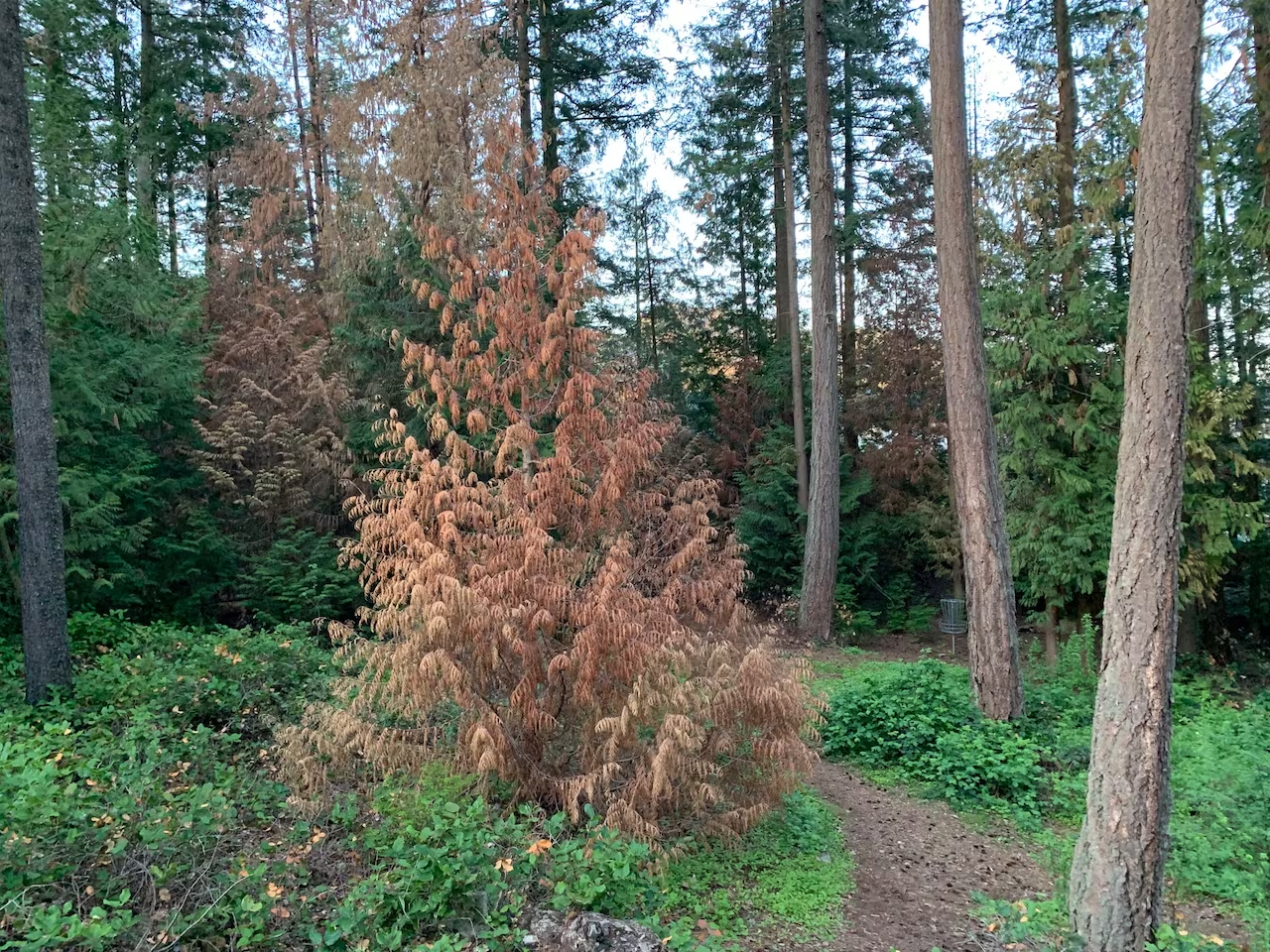Dead Cedar Trees: The Disturbing Decline of Cedar Trees in Victoria, BC
The browning and eventual death of Western red cedars

Introduction
In recent years, Victoria and the broader region of British Columbia have witnessed a disconcerting trend: the browning and eventual death of Western red cedars, a species native to the Pacific Northwest and deeply entwined with the region's ecology and cultural heritage. It's a phenomenon that extends beyond mere anecdotal observations; it's substantiated by research from institutions like the University of British Columbia and corroborated by field experts in ecology and arboriculture.
The Role of Climate Change
Most experts and studies point to climate change as the central factor behind the deteriorating health of Western red cedars in Victoria. The region is increasingly experiencing hotter, drier summers, coupled with milder winters. This alteration in climate leads to periods of drought, a condition to which the Western red cedar is particularly sensitive.
Climate models indicate that the climatic conditions conducive for cedar growth are shifting northwards. Areas that once presented optimal conditions for these trees are becoming inhospitable. Even established trees, some between 40-50 years old, find it hard to adapt to these rapid changes, which can result in "top dieback," where the upper parts of the trees begin to die off.
Soil and Geographical Vulnerability
Western red cedars prefer moist, well-drained soils for optimal growth. Unfortunately, areas with shallow, dry, and rocky soil—already marginal habitat for cedars—are becoming less suitable due to climate patterns. Such areas are often the first to manifest signs of stress in cedars, including overproduction of cones, browning needles, and susceptibility to disease.
Biotic Stressors: Insects and Pathogens
Climate change doesn't operate in a vacuum. Warmer temperatures also favor the proliferation of certain pests and pathogens. Trees weakened by drought are more susceptible to infestations. Common pests like the cedar bark beetle and fungal diseases like root rot can quickly compromise trees already stressed from environmental factors.
Cultural and Ecological Significance
The Western red cedar holds a unique place in the ecosystem and the cultural landscape of British Columbia. It serves as a habitat for various wildlife species and plays an essential role in nutrient cycling in forest ecosystems. For First Nations communities, the tree has enormous cultural significance, utilized for everything from canoe building to spiritual practices.
The Canary in the Coal Mine
The situation of the Western red cedar serves as an ecological indicator, a warning sign of broader environmental degradation. Trees are like the "lungs" of an ecosystem, and their decline is often an early indicator of systemic ecological stress. The deterioration of cedar health could potentially trigger a domino effect, destabilizing ecosystems and making them more susceptible to other stressors like fire.
Mitigating the Crisis
Efforts to conserve the species focus on both reactive and proactive strategies, including:
- Irrigation and Soil Management: For trees showing early signs of stress, proper watering and soil amendments can sometimes help recovery.
- Selective Planting: New plantings are being chosen based on species' resilience to anticipated future climate conditions.
- Pest Management: Biological controls and limited pesticide use can help manage pest populations.
- Public Awareness: Ecologists, local governments, and community organizations are engaging the public to educate them on the significance of the issue and actions they can take.
Conclusion
The declining health of Western red cedars in Victoria and across British Columbia is not just an isolated environmental issue; it's a clarion call for addressing the larger, looming crisis of climate change and ecological imbalance. The cedar's struggle encapsulates a complex interplay of climatic, soil, and biotic factors, making it a compelling subject for multidisciplinary research and conservation efforts. Only a coordinated, science-driven approach can hope to reverse this trend and save this iconic species from disappearing in regions where it once thrived.
